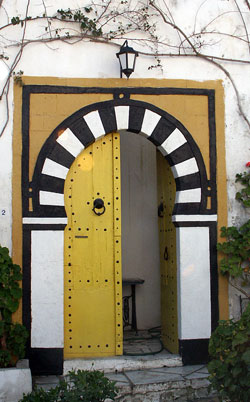
Cultural Spot ...
Samarkand - Crossroads of Culturals
View of the Registan
Samarkand is the second largest city in Uzbekistan suited in the valley of the river Zarafshan. This majestic and beautiful city is full of legends in its glamor history. Samarkand, meaning "Stone Fort" or "Rock Town" in Sogdian, is best known for its central position on the Silk Road between China and the west, and for being an Islamic centre for scholarly study. Since 2001, Samarkand is an UNESCO World Cultural Heritage site.
The city was founded in the 7th century BC by the Sogdians as ancient Afrosiab. Samarkand has been one of the main centres of Iranian civilization since its early days. It was conquered by Alexander the Great in 329BC. The Greeks referred to Samarkand as "Maracanda". In the 2nd century, the city became prosperous and an important centre of the silk trade. In the 6th century, the city was part of a Turkish kingdom. In the beginning of the 8th century, Samarkand came under Arab rule. A legend says, the secret of paper-making skill was obtained from two Chinese prisoners from the Battle of Talas in 751 which led to the first paper mill in the Islamic world being founded in Samarkand. From there the skill spread to the rest of Islamic world and then further to Europe.
Guri Amir Mausoleum
The Samanids of Iran occupied Samarkand from the 9th to 10th centuries and the Turkics from the 11th to 13th centuries until the Mongol invasion of Genghis Khan in 1220. During the 14th to 15th centuries, Samarkand had its most significant development in the Timurid period with the efforts of Timur the Lame (1336-1405), Samarkand emerged to be a strong and important commercial and political centre. It was rebuilt on its present site and became the capital of Timur's powerful state and the repository of the material riches from conquered territories that extended from Central Asia to Persia, Afghanistan, and India. Timur built a citadel, the Blue Palace (Kuk-Saray) and other important buildings. Timur's period was highlighted by a new synthesis of arts. Local traditions were influenced from other regions of the empire (Persian Khorasan, Khorezm). The eastern gates of the town linked with the city centre, known as Registan Square. Samarkand remained a cultural capital of Timurids until the reign of Ulugh Bek (1409-1449) and his successors. Ulugh Bek built a major complex on the Registan Square in 1447.
In 1500, the Uzbek nomadic warriors took control of Samarkand and built the Shaybanid dynasty - a Persianized dynasty of Mongolian origin in central Asia. The Shaybanids moved capital from Samarkand to Bukhara. Hence, Samarkand became the Khanate of Bukhara and gradually lost its earlier importance. Even Samarkand became less important than it used to be. There were still some great construction works undertaken in the 17th century. These works are highlighted by the Madrassah of Shir-Dor on the Registan Square opposite the Ulugh Bek Madrassah, the Tilla Kari Madrassah and a new Friday mosque. In the 18th century, Samarkand suffered a serious economic decline until towards the late of 19th century.
Bibikhanym Mosque
In 1868, the Russians conquered Samarkand. Samarkand became Russian's provincial capital in 1887. Its economy was revived since then, specially since the Caspian Railway was built linking Samarkand with Europe and Central Asia. This reinforced Samarkand's historical role as a trade centre. The Russians built schools, churches, hospitals and other social facilities in the city. However during this period, the city walls and gate, Timur's citadel and some other monuments suffered destruction.
Since the 20th century, Samarkand is seen as consisting three main sectors: the archaeological area of the ancient city (Afrosiab), the medieval Timurid city, and the modern city for the constructions after 1870.
Samarkand, a legend in the past, is awaiting silently his new legend in future.


